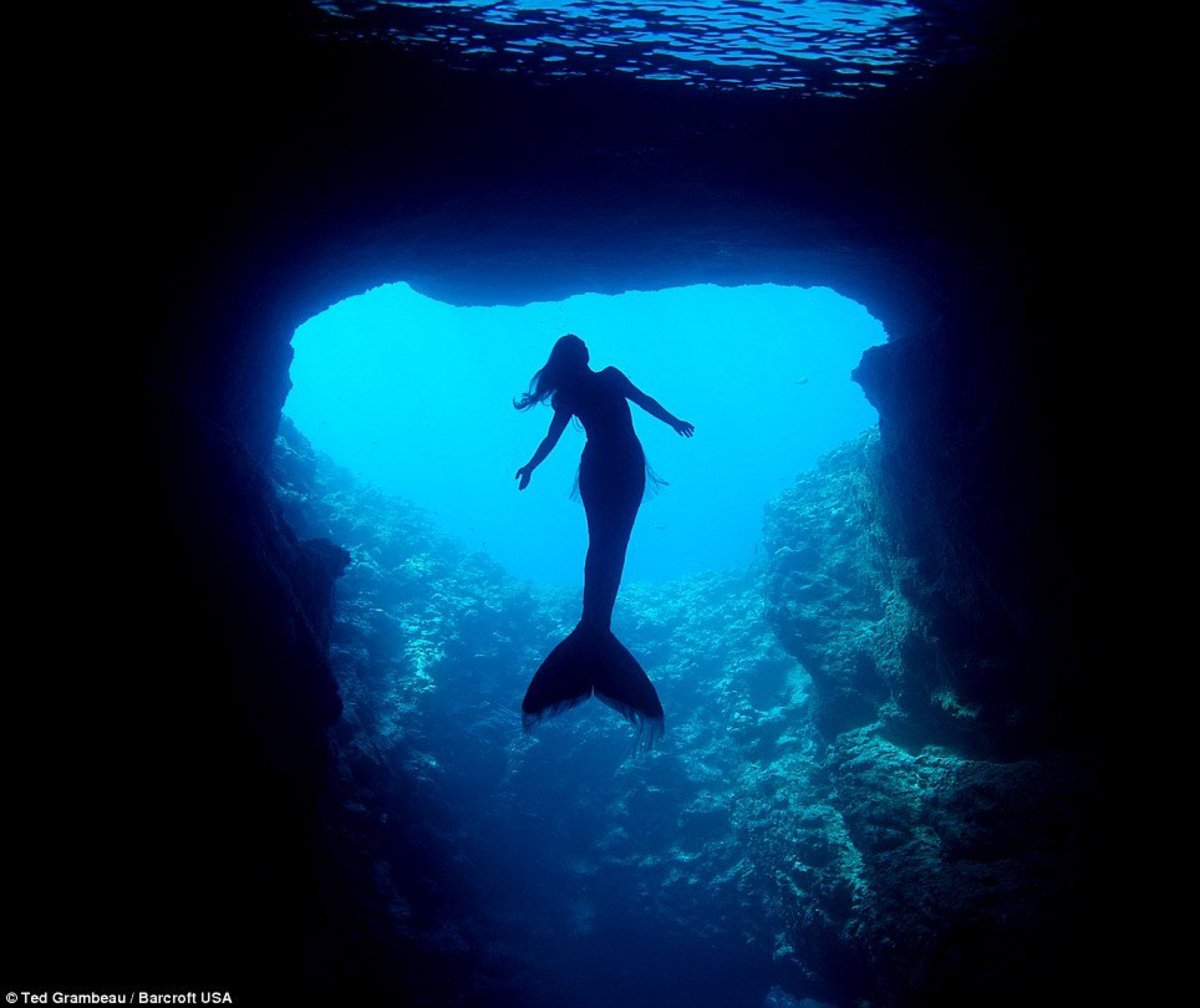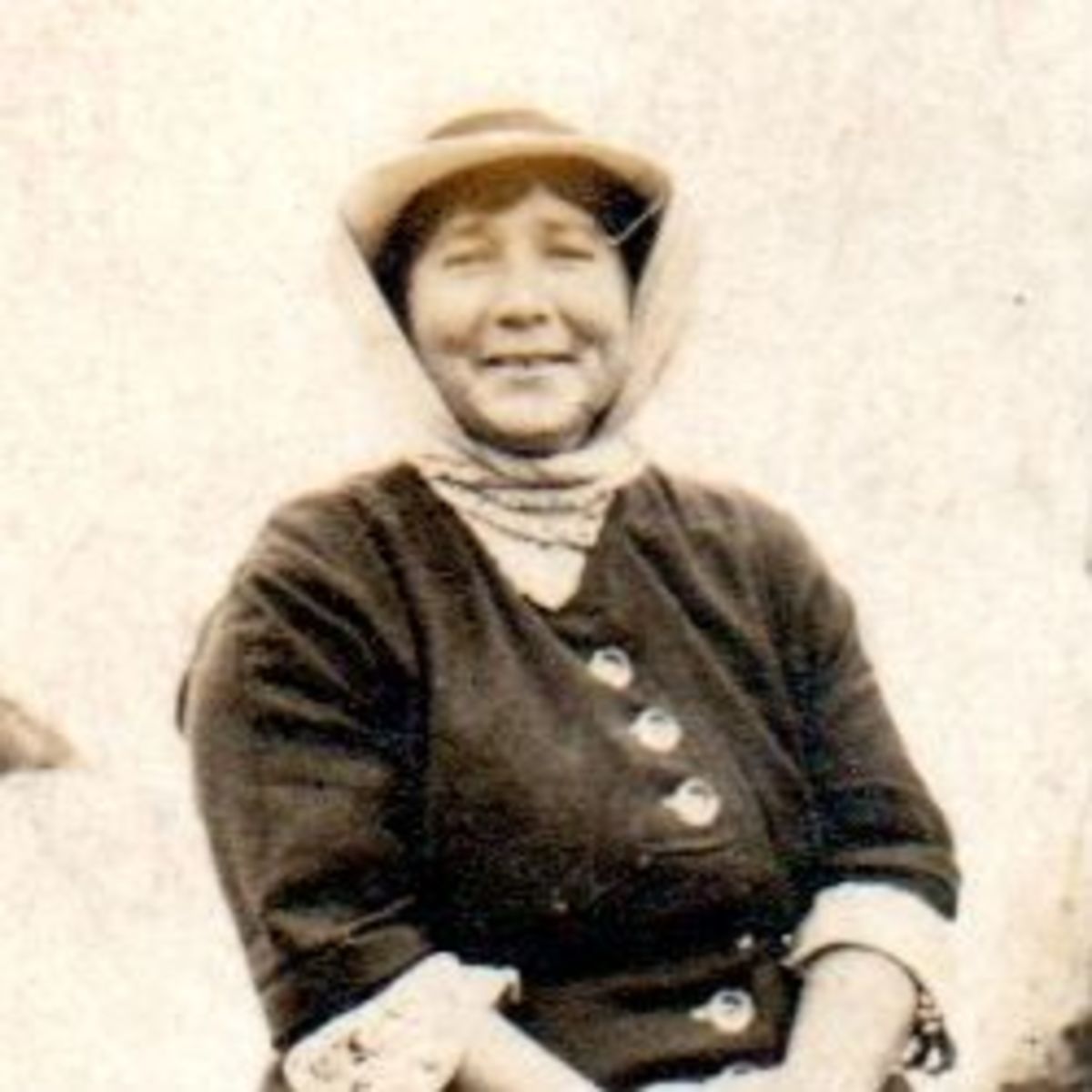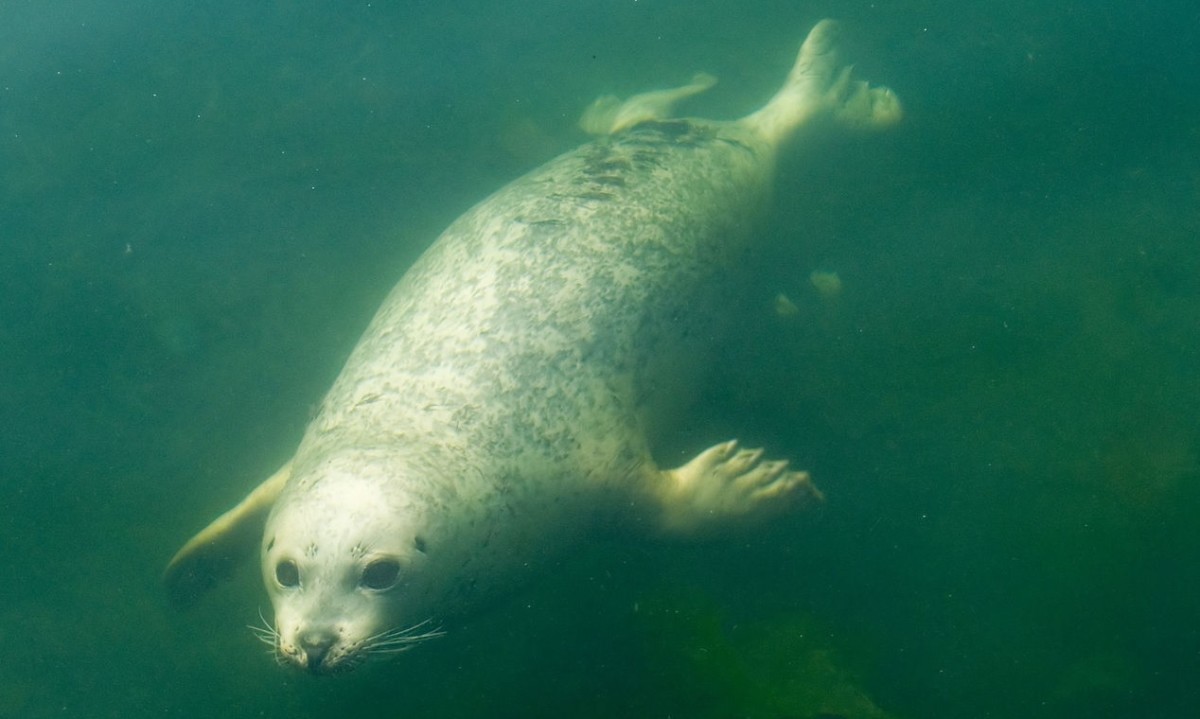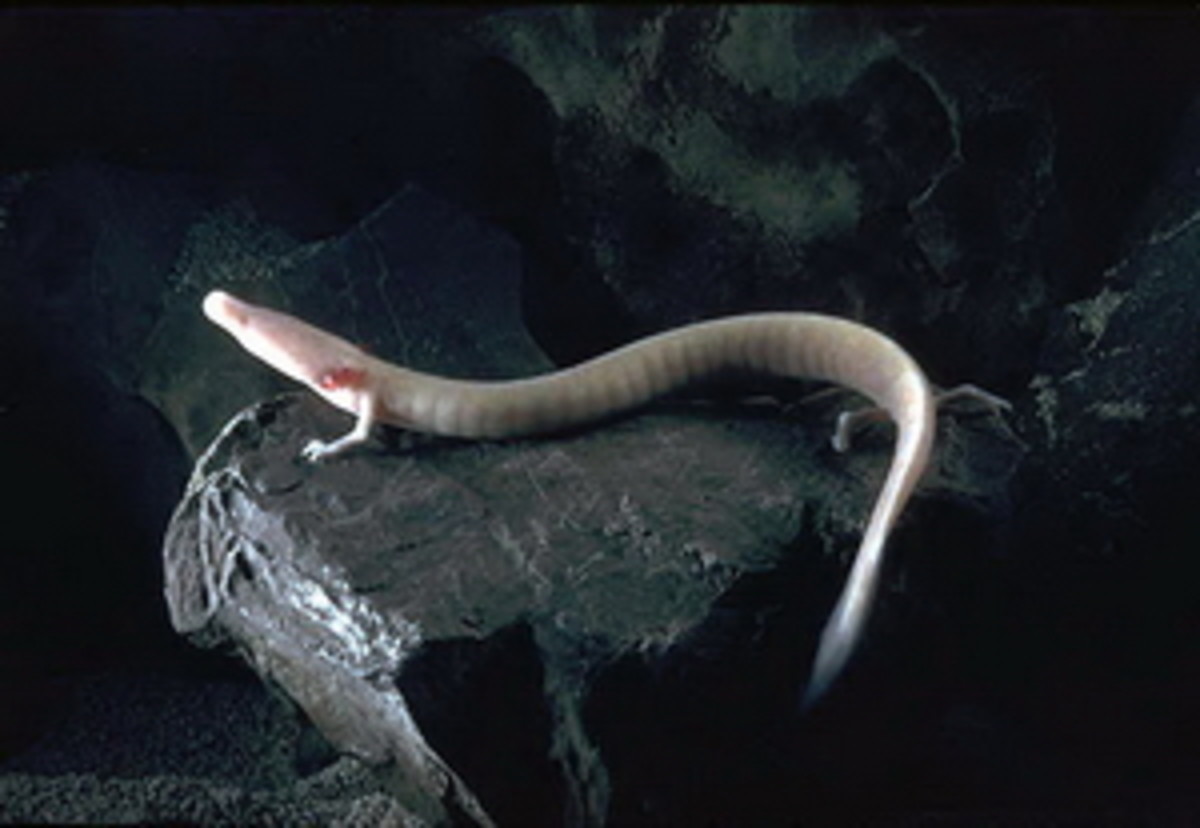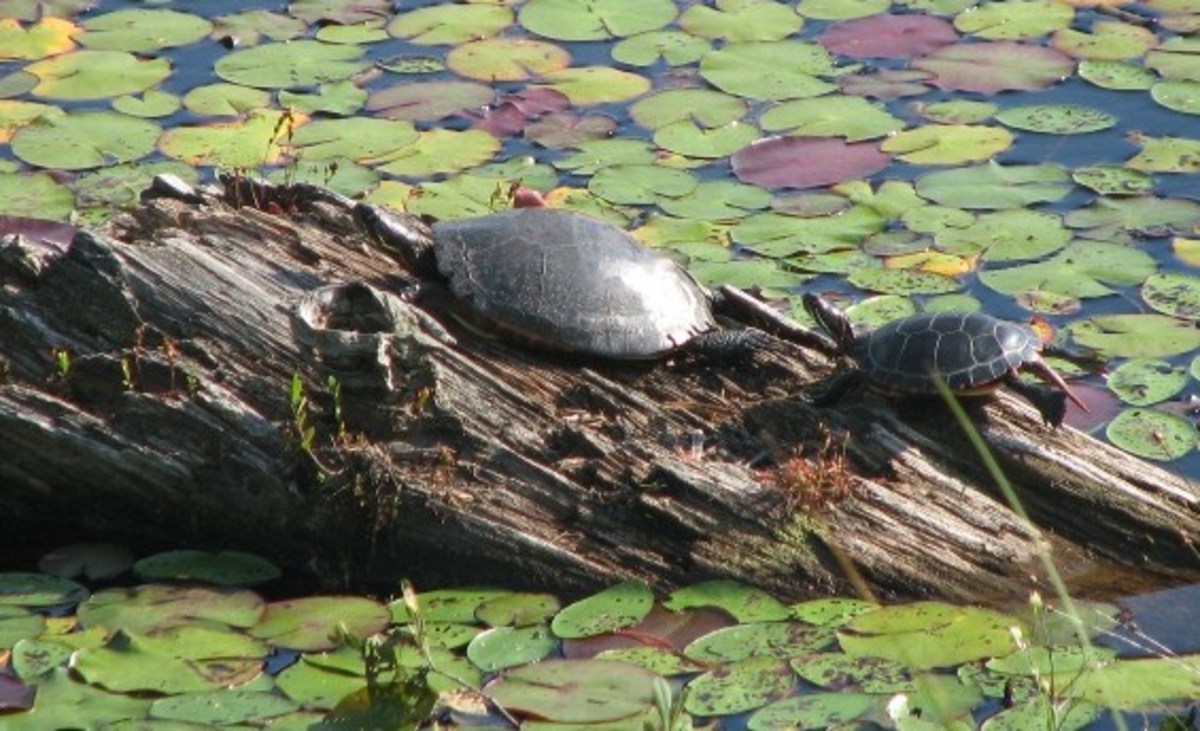- HubPages»
- Education and Science»
- Life Sciences»
- Endangered Species
Save the Monk Seal - You Can Help
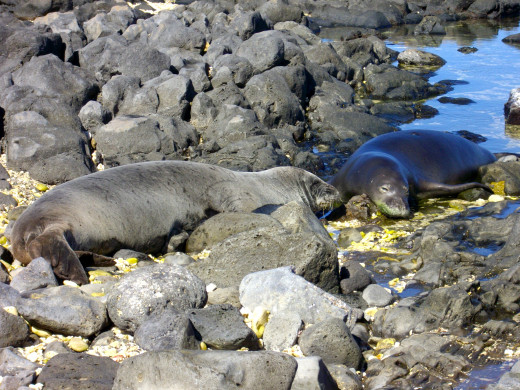
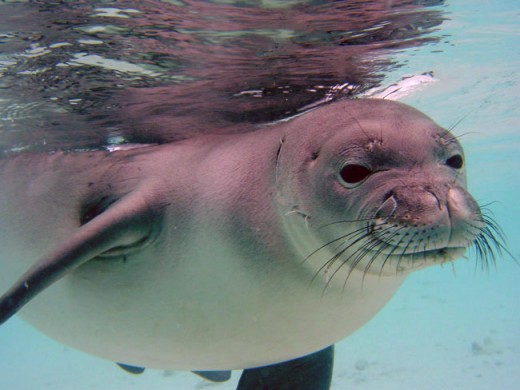
"Wake up world!" or the critically endangered monk seal will soon be extinct. The Main Hawaiian Islands (MHI) are the only place in the world where the monk seal population is increasing slightly. Monk seals, the earliest species of seals as categorized by man, once proliferated in the Caribbean, Mediterranean, and Hawaiian Isles. Considered a living fossil, monk seals have been in Hawai`i for millions of years, long before the first Polynesians arrived to populate Ancient Hawai`i. The Caribbean monk seal, last seen in 1952 is now extinct. The Mediterranean monk seal, whose population was recently estimated at under 600 is rarely seen. Government scientists are closely monitoring the Hawaiian monk seal population, and in 2000, the population was estimated at 1400. Due to a low juvenile survival rate, the 2012 population hovers below 1100 and the population is declining at an annual rate of 4 percent. We can help save this ancient precious native treasure.
NWHI Vs MHI
The world discovered Hawai`i, after the arrival of Captain Cook and other European and American explorers in the late 1700s and mariners took advantage of the seaʻs resources. Whales and seals were killed for their skin, meat and oil. Whale and seal populations were being wiped out rapidly when Teddy Roosevelt designated the Northwestern Hawaiian Islands (NWHI) a wildlife refuge in 1907. Additional concern for the seals began in the mid 1970s when they were counted at only 50% of their population from the 1950s. The National Oceanographic and Atmospheric Association (NOAA) got involved, conducted studies and undertook measures to protect the seal. For the next few decades NOAAʻs National Marine Fisheries Services (NMFS) would oversee protecting the seal population in the NWHI. President George Bush renewed the NWHI as a wildlife refuge in the 1980s, but the monk seal population continued to decline rapidly. Around the same time a surge of seal sightings in the Main Hawaiian Islands ensued and continues to this day. Not only is the MHI seal population slightly increasing, but the pups appear much healthier than those in the NWHI. While only 153 monk seals live in the MHI, 80 percent of their pups survive to adulthood as compared to 20 percent of the NWHI pups.
NWHI - A Shrinking Resource
Four out of five NWHI pups fall victim to starvation, predators, fishing debris entanglement, and male mobbing before they reach their reproductive age of five to seven years. The NWHI are shrinking as a food resource for the seals, with pups having to forage farther and deeper than before. This sets them up for two more perils: sharks and web/hook hazards.
Male mobbing occurred when the ratio of males to females widened to three to one. Frenzied males became overly aggressive in their desire to mate the rare female and mobbed her and her juvenile counterparts, sometimes to death, creating even more of a gender gap.
"There are hopeful signs for the population in the northwest, as long as weʻre still able to continue our efforts to help boost it by making sure as many females survive as possible." said Charles Littnan, lead scientist for the Hawaiian Monk Seal Research Program.
In August of 2012, Littnanʻs team moved 2 juvenile females from the French Frigate Shoals, where tiger sharks have killed 17 of 31 pups. Littnan says moving these seals improved their survival rate by 3 times. They had hoped to move more, but funding was cut and their 6 month expedition was reduced to 7 weeks. In February of 2012, the team also removed aggressive male seal KE18 from Kure Atoll where he had killed 2 female juveniles and injured 11 other pups. KE18 is now at a University of California (UCLA) - Santa Cruz research laboratory. Perhaps he can change his karma and follow in the flippers of Hawaiian Monk Seal Ambassador Ho`ailona.
Ho`ailona - Monk Seal Ambassador
KP2 was a nearly blind baby monk seal found on Kauai in May of 2008 by NOAA seal researchers. Three days old, and abandoned by his mother, he was trying to suckle a rock. KP2 was raised by humans then released into Molokaiʻs ocean when old enough. Molokai swimmers and surfers became fast friends with this seal that loved to hang out and affectionately named him Hoʻailona or symbol. He let children climb aboard his back for rides. When 400 pound/181 kg Ho.ʻailona began his human hugging . . . everyone loved it . . . but NOAA got involved again . . . this big loving seal could possibly hurt someone or someone could hurt him? Much to Molokai islanderʻs dismay NOAA removed their cherished seal.
Ho`ailona was moved to the UCLA Santa Cruz research lab, where he was studied for many years. He also was the guest of honor for many presentations supporting seals and critically endangered species.
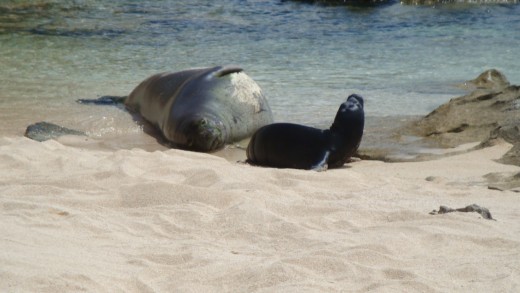
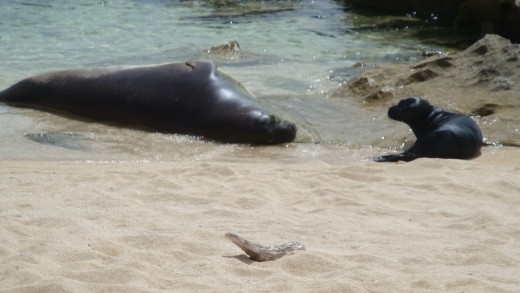
MHI and the Human/Monk Seal Connection
Hoʻailonaʻs human upbringing has prohibited him from a normal seal life in ocean waters. In 2012 he was moved to Waikiki Aquarium where he once again is a seal ambassador. With the growing seal population on Hawaiiʻs peopled islands, the human connection must be factored in. Monk seals are solitary creatures who shy from men and even each other, yet seals are hauling out on popular beaches in ever increasing numbers, especially on Kaua`i and Oʻahu. Many of these seals are mothers, who must give birth on land and teach their pup to swim in shallow shoreline waters. In June of 2010, 2 seals sunned themselves on a popular, people filled Waikiki beach. Seals have been sighted on the shores and surf breaks of Kauaʻi, O`ahu, Niʻihau and Maui. 2006 saw 12 pups born in the MHI, 2007 saw 13, 18 MHI pups were born in 2008, and 25 in 2010.
As a beach researcher, I have spent my free time exploring O`ahuʻs coasts. In February of 2009 I came across a monk seal mom and pup on Ka`ena Point. In September of 2010. I came across a mom and tiny 3 day old pup at Turtle Bay. In 2012, I see and hear of monk seals hauling up on Oahuʻs leeward shores on a monthly basis. The MHI are a new niche for critically endangered monk seals. NOAAʻs Pacific Island Fisheries Science Center (PIFSC) predicts that if population trends continue MHI monk seal population will equal NWHI seal population by 2024.
The Far Reaching Feds and the Frustrated Fishermen
NMFSʻ proposal to extend the monk sealʻs refuge from NWHI to many MHI shorelines has met with static from island fishermen. On August 30, 2012 over 60 people attended a public hearing at Ala Moana Beach Park to discuss a NMFS proposal to expand the monk seals critical habitat. The proposal would give NMFS the same regulation authority in the MHI that they have in the NWHI. The proposal also brings up the possible temporary relocation of NWHI seals to MHI.
Attendee and fisherman BH finds the monk seals a nuisance. “I fish a lot at night. One of those seals started hiding under my boat. It takes fish from my lines, then my partner’s line. We’re losing fish left and right. We moved three miles down the coast. The monk seal started following us. They are already trained to be looking for our boats for a free handout.”
Frustrated fishermen became more irritated when the three environmental groups who petitioned NOAA for MHI seal protection were either not at the meeting or did not wish to make their presence known. According to NOAA biologist LS, the only reason the proposal was going forward was because of the environmental groupsʻ petitions.
Keeping the fishermensʻ feelings in mind, the fact is that three monk seals died in Oahu lay grill nets, one in 1995, one in 2006 and one in 2007. Between 1982 and 2006, 38 MHI seals were embedded with fish hooks, causing 1 death. These are recorded instances and itʻs speculated the actual number of incidences is higher.
The Vigilant Volunteers and the Virulent Violaters
NMFSʻ Monk Seal Program has enlisted and trained a group of MHI volunteers to assist them. When a monk seal hauls out onto land, the Feds are notified ASAP and one of NMFSʻs agents puts yellow tape and warning signs in a prescribed perimeter around the basking mammal. When a mother hauls out to give birth, mom and pup are enclosed in even larger perimeter, with seal loving islanders providing a 24 -7 watch. Hawaiiʻs dedicated group of volunteers have their own posse patrolling shorelines. Seal sightings are reported daily if not hourly at http://monksealmania.blogspot.com/. Blog writer Barbara, monk seal whisperer DB, and many other humanitarians work around the clock securing the safety of monk seals.
These valiant volunteers are needed as three recent events show: In March of 2011, 19 year old beach-goer CC was observed running up to RO12, or Kermit as he is affectionately known and slapping him. Confused Kermit immediately headed back to the water. The volunteer/witness notified local police. CC found himself in court paying a $100.00 fine. In January of 2012, 19 year old TK was photographed throwing rocks at a seal on Rabbit Island, an Oahu bird sanctuary, where the public is prohibited. TK was fined $1000.00 and ordered to provide 80 hours of community service. In May of 2009, a monk seal was intentionally shot and killed in Kaua‘i. Investigation led to a 78 year old man. CV pled no contest to receive a reduced a 90-day prison term and a $25 fine. CVʻs victim, RK06 was a pregnant teenage female about to give birth to a male pup. She had previously given birth to 5 pups and is a tremendous loss to the MHI breeding population.
Who is Killing MHI Monk Seals?
Adding fuel to the federal, fishermen, volunteer and violater fire, are the more recent killings of three and possibly four MHI seals. Two seals were found bloudgened to death on Molokai in late 2011, one in October and one in December, a possible third killing is being investigated. On April 21 of 2012 another dead seal was found on Kauai. Four hawaiian monk seals may not seem a lot, but when you consider there are less than 1100 left in the world? The Ancient Hawaiians named the seal `Ilioholoikauaua, or dog that runs in rough seas . . . the seal was a creature they truly revered, yet today the main predator for the MHI seal is modern man.
The Humane Society of the U.S., Conservation Council for Hawai'i and the Center for Biological Diversity offer a $10,000 reward for information leading to the arrest and conviction of the person(s) responsible for each monk seal death, increasing the total reward offering for all four suspicious incidents to $40,000. Call 1-855-DLNR-TIP to report info on who is killing Hawaiian monk seals.
Hope - Research and Public Outreach
In 2008 Hawaii Lieutenant Governor James Aiona named the Hawaiian monk seal as the official state mammal, perhaps as a way of educating the public about their situation. On June 8, 2010, Aiona signed a new bill into law, making it a felony to harm a Hawaiian monk seal. Fines up to $50,000 can now be imposed for those who commit crimes against monk seals.
In August of 2012 NMFS teamed up with National Geographic(NG) to connect a camera to male MHI monk seal RM38 on Molokai. More crittercams devised by NG will provide needed research regarding MHI seals food sources. NMFS felt certain that MHI monk seals eat outside of MHI fishermen territory and in February of 2014, Crittercam Footage Busts Myths about Hawaiian Monk Seals was aired on Hawaii News. The camera footage shared with the public proved monk seals are not encroaching on fishermen resources.
You can help by politically supporting those politicians where you live who support protecting endangered species. A monk seal facility on the big island and a NOAA hospital for monk seals and other marine life at Ford Island, Oahu have been constructed with 1.7 million dollars raised by public donations.
Resources
National Audobon Society Guide to Marine Mammals of the World byRandallR. Reeves, Brent S. Stewart, Phillip J. Clapham, James A. Powell. Published by Alfred A. Knopf, Inc 2002
http://www.pifsc.noaa.gov/hawaiian_monk_seal/population_at_a_glance.php
Honolulu Star Advertiser "Birth of Monk Seals tumble to record low in northwestern isles" Audry McAvoy September 9 2012
http://monksealmania.blogspot.com
http://www.staradvertiser.com/news/20110623__Man_will_pay_100_for_monkseal_touch.html
http://thegardenisland.com/news/local/article_f90a017c-b642-5a59-ba7f-b67b45c29791.html
http://www.monachus-guardian.org/mguard24/2413hawnew.htm
http://www.hawaiireporter.com/lt-governor-signs-hawaiian-monk-seal-protection-bill/123
http://www.hawaiinewsnow.com/story/24688098/crittercam-footage-busts-myths-about-hawaiian-monk-seals


